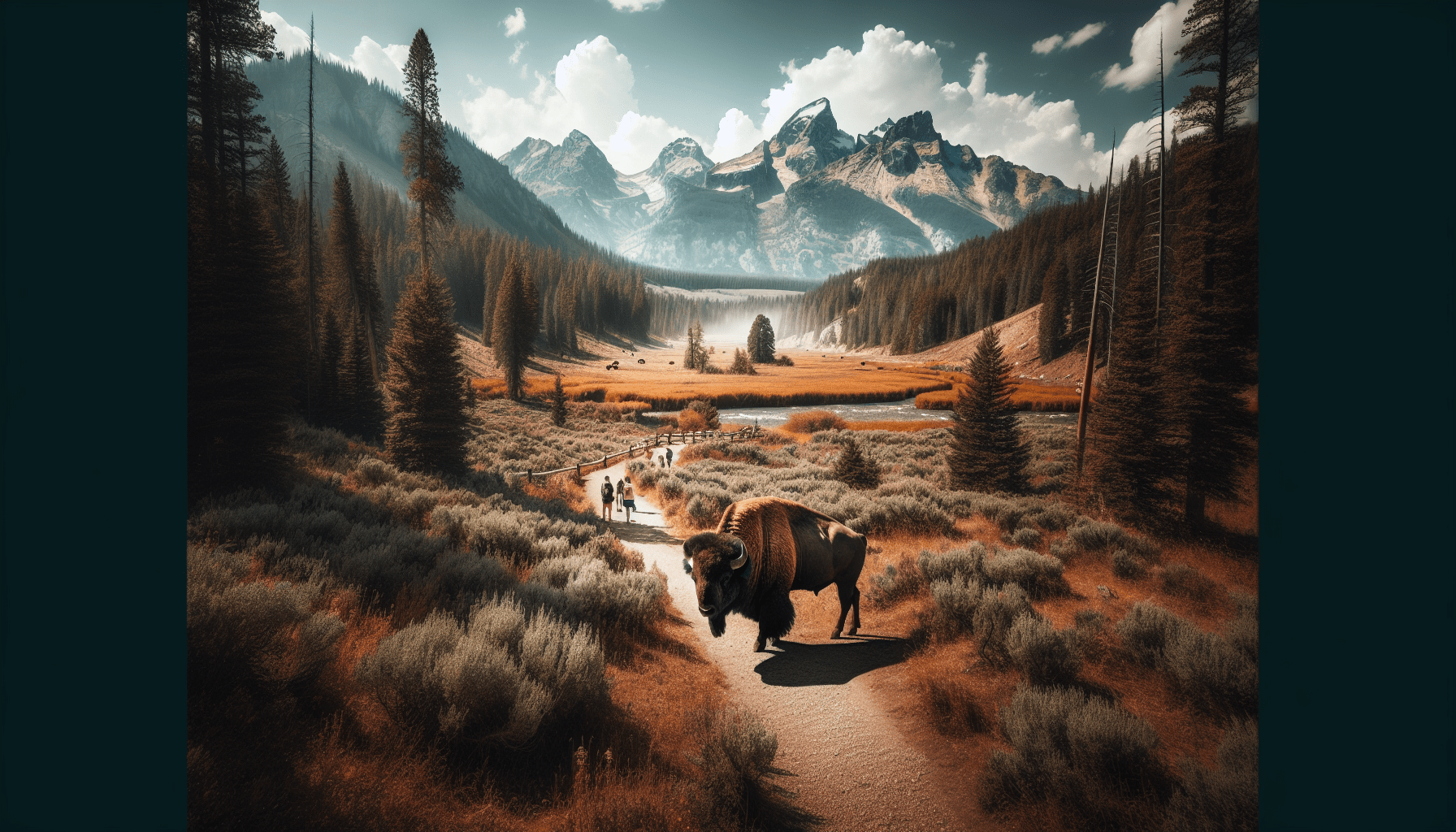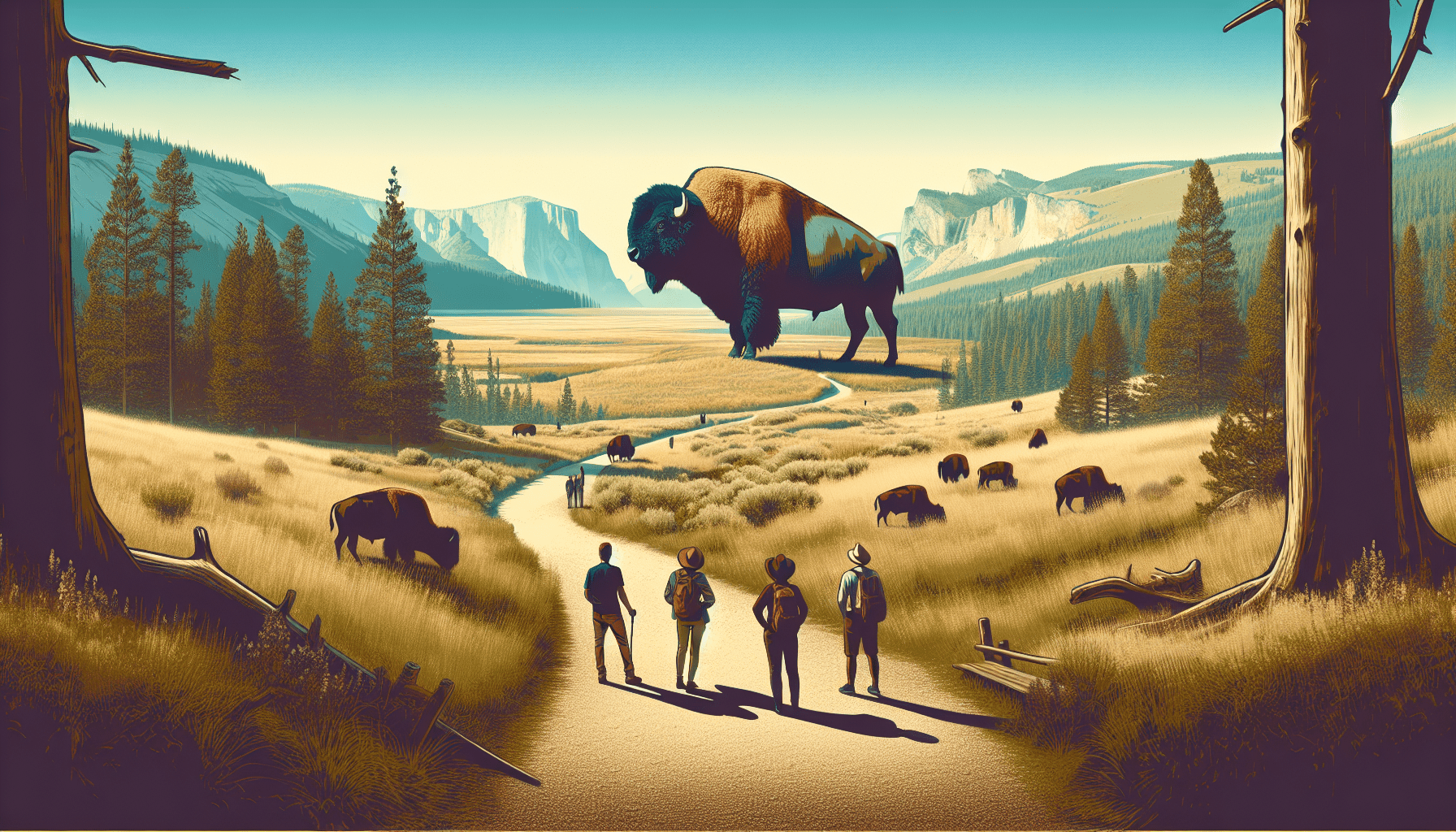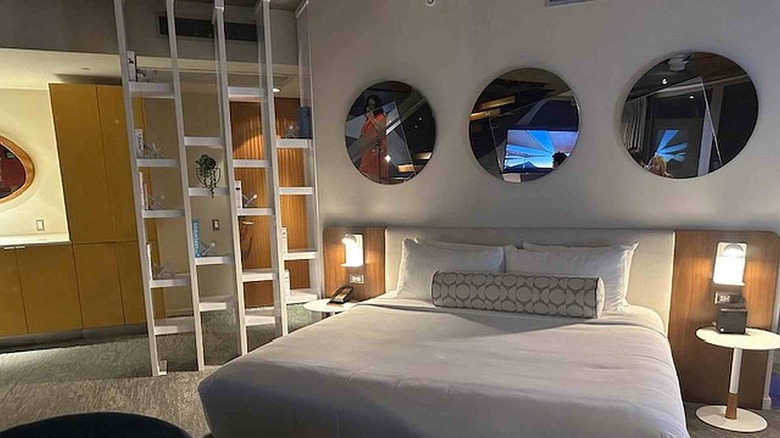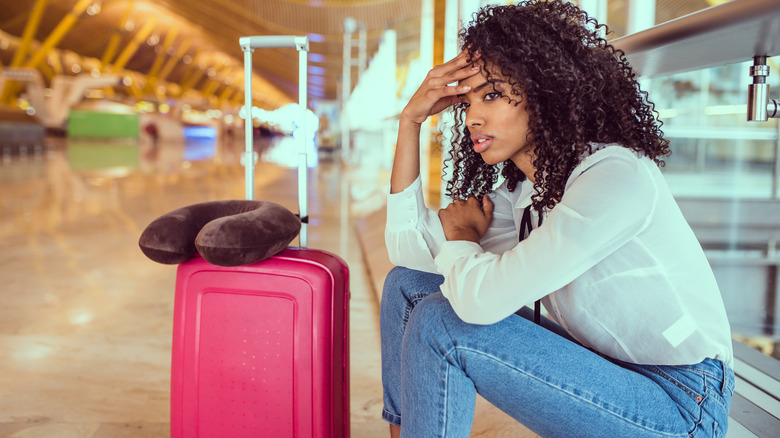BAGAIL 4 Set/6 Set Compression Packing Cubes Travel Accessories Expandable Packing Organizers(Black ClothPattern 4 Set)
$19.99 (as of November 20, 2024 15:23 GMT +00:00 - More infoProduct prices and availability are accurate as of the date/time indicated and are subject to change. Any price and availability information displayed on [relevant Amazon Site(s), as applicable] at the time of purchase will apply to the purchase of this product.)What happens when you combine stunning natural beauty and curious tourists? Sometimes, it results in a hazardous mix where visitors at Grand Teton and Yellowstone risk too-close-for-comfort encounters with wildlife. These moments are not just tales for the campfire but real scenarios that can lead to dangerous interactions and unintended consequences for the animals inhabiting these iconic parks.

Shop These Accessories for a Comfortable Trip
The New Issue: Tourists Close to Wildlife
Picture this: You’re at the majestic Grand Teton or the sprawling Yellowstone, surrounded by the pristine wilderness that these national parks are famous for. It’s amazing, right? Now, you spot a bison or a bear, and it feels like the ideal moment for that perfect selfie. But this urge to capture a once-in-a-lifetime photo can sometimes lead to people getting way too close, which spells trouble for both humans and animals.
Tourists seem to forget that these wild animals aren’t part of a zoo exhibit. The result? More than a few hair-raising close encounters. Remember, what might seem like a harmless photo op can quickly turn dangerous—for you and the animal.
Warnings Ignored
Despite numerous warnings and hefty fines imposed by the National Park Service (NPS), tourists keep pressing their luck. Signs are posted everywhere, rangers give endless reminders, and yet, the incidents just keep coming. Maybe it’s the thrill, maybe it’s not knowing the risks, but whatever the reason, people keep approaching the wildlife.
Not only is this risky for tourists, but for the animals too. Sometimes, these close encounters end up stressing the animals to the point where the only solution is euthanization. It’s a tragic end that could easily have been avoided with a little bit more awareness and a lot more distance.
Distance Guidelines from Official Sources
| Animal | Recommended Distance |
|---|---|
| Bison | At least 25 yards |
| Elk | At least 25 yards |
| Moose | At least 25 yards |
| Bears | At least 100 yards |
| Wolves | At least 100 yards |
These guidelines are put in place for a reason—your safety and theirs. Still, it seems not everyone got the memo (or chose to ignore it).
The New Tool: “Selfie Control” Instagram Filter
In a bid to curb the growing problem of too-close wildlife selfies, the Jackson Hole Travel & Tourism Board has come up with an innovative solution: the “Selfie Control” Instagram filter. Technology to the rescue! This isn’t just any filter that adds cute ears or funny noses. It’s a tool designed to help you gauge if you’re too close to the wildlife you’re trying to photograph.
How Does the Filter Work?
The “Selfie Control” filter functions by overlaying an animal icon on your camera screen. If the real animal appears larger than the icon on your screen, it means you’re too close. Simple but effective. It works in real-time, so you can adjust your distance instantly, keeping both you and the animals safe.
Here’s how straightforward it is: If your phone screen shows a big bison icon and your actual bison subject is dwarfing that icon, back up immediately. No second-guessing, no unnecessary risk-taking.

Shop These Accessories for a Comfortable Trip
Distance Guidelines: The Essential Reminder
One of the most crucial aspects of visiting these beautiful national parks is adhering to distance guidelines. Even though the filter is a fantastic tool, knowing the general rules can never hurt.
| Predator | Safe Distance |
|---|---|
| Bears | 100 yards (91 meters) |
| Wolves | 100 yards (91 meters) |
| Large Animals | Safe Distance |
|---|---|
| Bison | 25 yards (23 meters) |
| Elk | 25 yards (23 meters) |
| Moose | 25 yards (23 meters) |
Keeping these distances in mind can help you enjoy your visit without putting anyone at risk. Remember, these animals are powerful and can be unpredictable, especially when they feel threatened.
Educational Value: A Step Towards Awareness
The “Selfie Control” filter isn’t just a high-tech measuring tape. It’s also about educating you on respecting wildlife. Knowing that your actions can directly impact the lives of these marvelous creatures can be a powerful motivator.
Spreading the Word
It’s designed to give you an immediate, visual cue that you might be invading an animal’s space, triggering a moment of reflection. This instant feedback can be more impactful than reading about it or hearing it second-hand. Seeing is, after all, believing.
Open-Source Initiative: The Gift that Keeps Giving
The beauty of the “Selfie Control” filter lies not just in its practical application but also in its shareability. The filter is open-source, making it available for adoption and customization by other parks and wildlife reserves globally.
This open-source initiative means that the technology can be adapted to different environments and different species. It opens the door to broader, more widespread use, ultimately leading to safer interactions between tourists and wildlife in various settings.
The Broader Impact
By sharing this tool, other parks can offer their visitors a similar safety mechanism. With more people using it worldwide, the cumulative effect could lead to significant improvements in wildlife conservation efforts and safer tourism practices everywhere.
Success and Adoption: The Ripple Effect
So far, the reception to the “Selfie Control” filter has been nothing short of fantastic. Tourists have found it helpful, and park authorities are seeing a decline in risky close encounters. Due to its positive impact, other parks are now looking into implementing similar technologies. It’s like a wave of smarter, safer tourism practices spreading across the globe.
Why It’s Working
The key to its success lies in its ease of use. There’s no need for complicated instructions or prolonged explanations. All you need to do is look through your phone screen and let the filter guide you. It’s interactive, engaging, and most importantly, it works.
Safety and Conservation: A Dual Approach
Beyond just keeping tourists safe, the filter plays a crucial role in wildlife conservation. Reducing stress on wildlife helps them thrive in their natural habitats, maintaining the delicate ecological balance of these parks.
The Bigger Picture
When you think about it, using a filter to maintain safe distances might seem like a small thing. However, the cumulative effect of hundreds or thousands of tourists using it can lead to a significant reduction in stress and potential harm to wildlife. It’s a win-win for everyone involved.
Final Thoughts
While technology like the “Selfie Control” filter is an excellent step forward, the ultimate responsibility still lies with you. Awareness and conscientious behavior while visiting these parks can ensure that you have a memorable experience, without causing any harm to the wildlife that calls these places home.
Remember, national parks offer a glimpse into the natural world, a world that needs to be respected and preserved. So next time you find yourself in Grand Teton or Yellowstone, armed with your camera or smartphone for that perfect shot, bear in mind the risks and use the tools available to you. It could make all the difference in preserving these majestic creatures for future generations to marvel at.
Inspiration for the Future
Imagine more and more parks adopting such technology and making strides in both safety and conservation. Together, we can create a future where wildlife and humans coexist harmoniously, with every snapshot capturing not just the beauty but also the respect we hold for the natural world.
Shop These Accessories for a Comfortable Trip






